Tesoro Viejo Specific Plan
Madera County, California
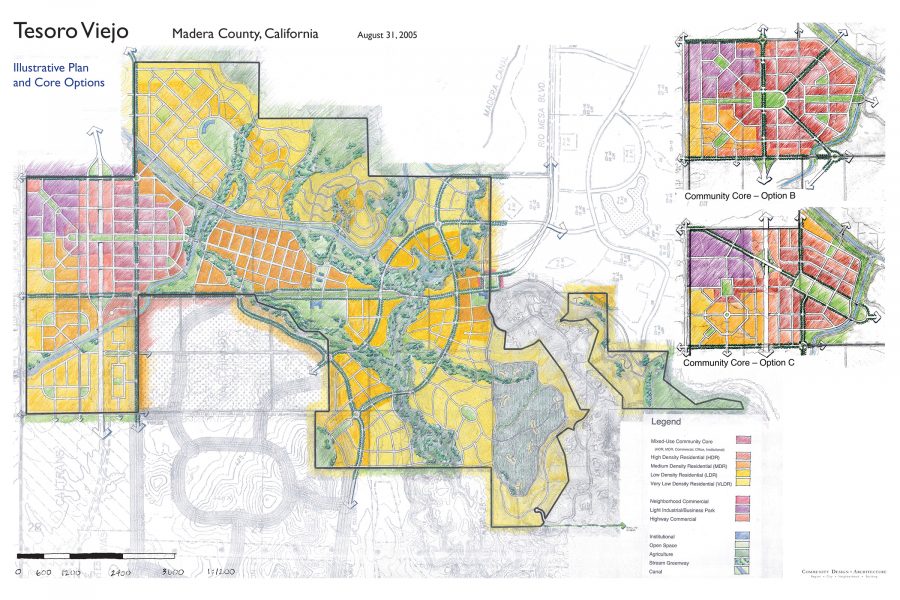
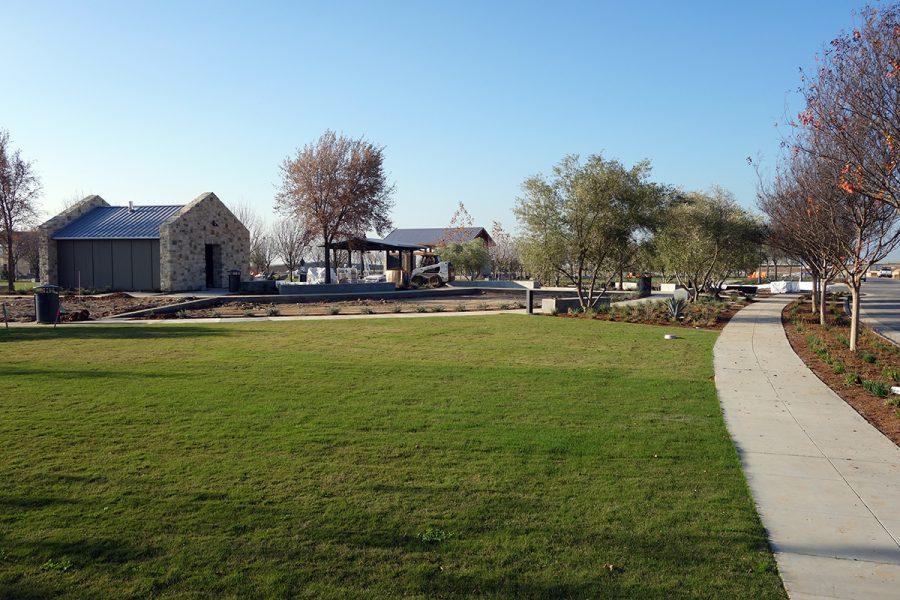
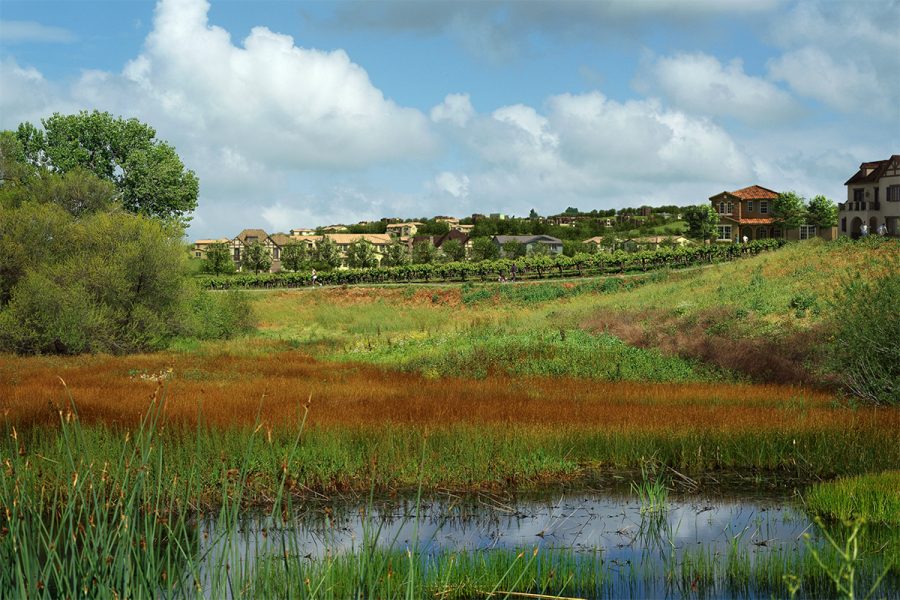
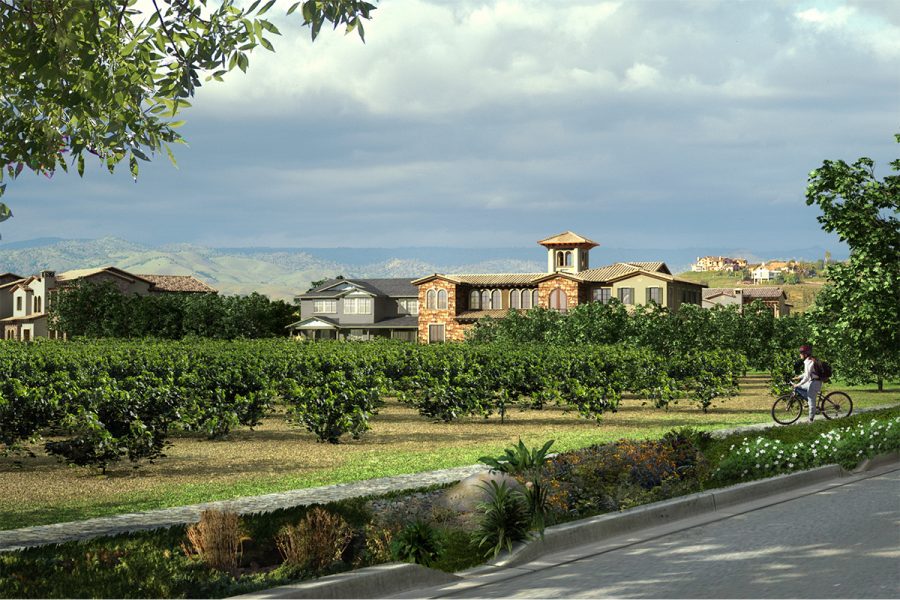
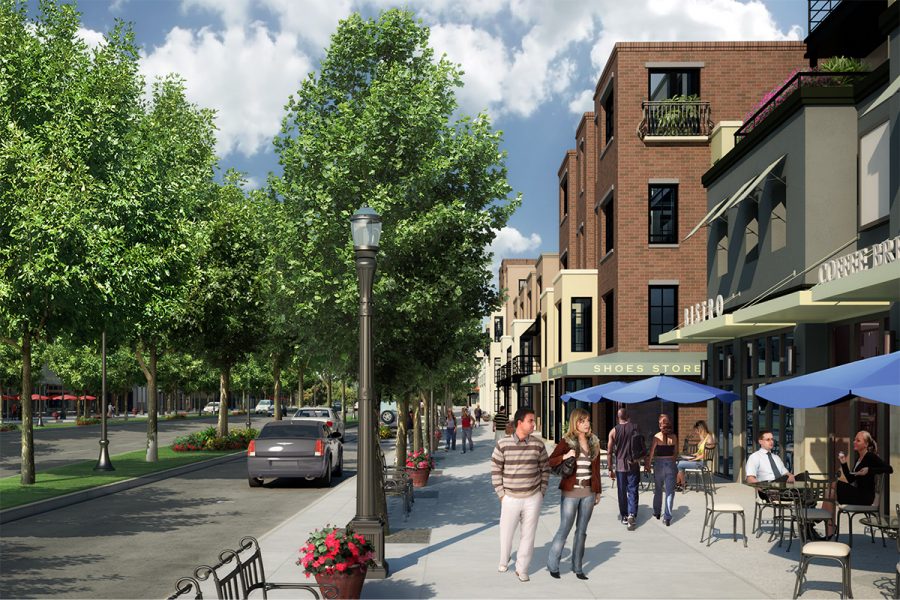
Client: Tesoro Viejo, Inc.
Role: Lead Consultant
Project Duration: 2005 – 2008, 2012
Key Features
- Walkable mixed use community with community and neighborhood centers and a range of housing types and densities
- Multimodal network of streets and trails
- Preserved open spaces and creek corridors create unique and extensive trail, park and open space networks
Description
Tesoro Viejo, a 1,500-acre mixed-use community in Madera County, California was designed to house from 3,800 to 5,200 dwelling units in a range of housing types and densities and approximately 2.5 to 3.5 million square feet of commercial and business park/industrial space. The community’s design and land uses create walkable neighborhoods and encourages walking and bicycling to get around and access community services and amenities. The mixed-use community core includes high density residential, community retail, and office uses, and was intended be the primary retail and employment center for southeast Madera County. Other services and public uses including potential office/research & development, mixed use neighborhood center, elementary schools, and public and civic uses were planned to strengthen neighborhood and community centers.
CD+A led a team to develop the land use plan and prepare a specific plan. CD+A began the design process by identifying and preserving the unique natural and agricultural resources of the site and using them to establish the community’s open space structure. This included about 200 acres of open space to be preserved as part of the pedestrian and bicycle network and additional areas to be incorporated into residential neighborhoods, boulevards, and neighborhood parks. CD+A also developed a street network to disperse traffic to preclude wide “divider” streets and created a set of street cross sections that are both pedestrian and bicycle-friendly and incorporate landscape-based stormwater treatment and control facilities. The specific plan was approved and CEQA documentation was certified in 2008. A revised specific plan was prepared and approved in 2012.
